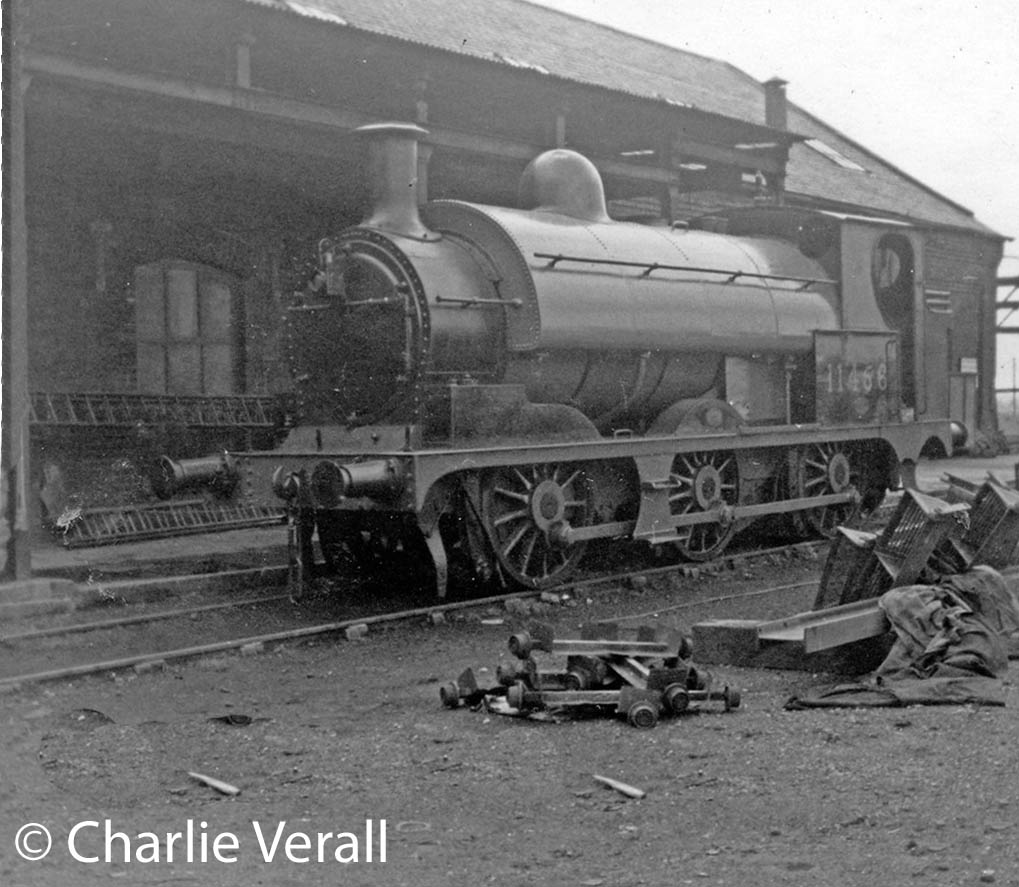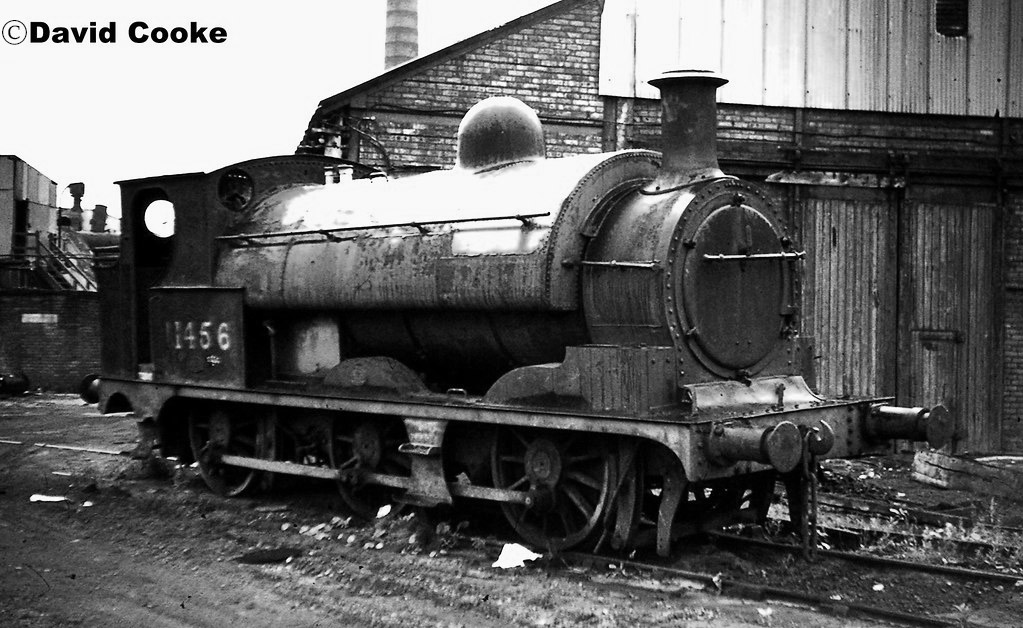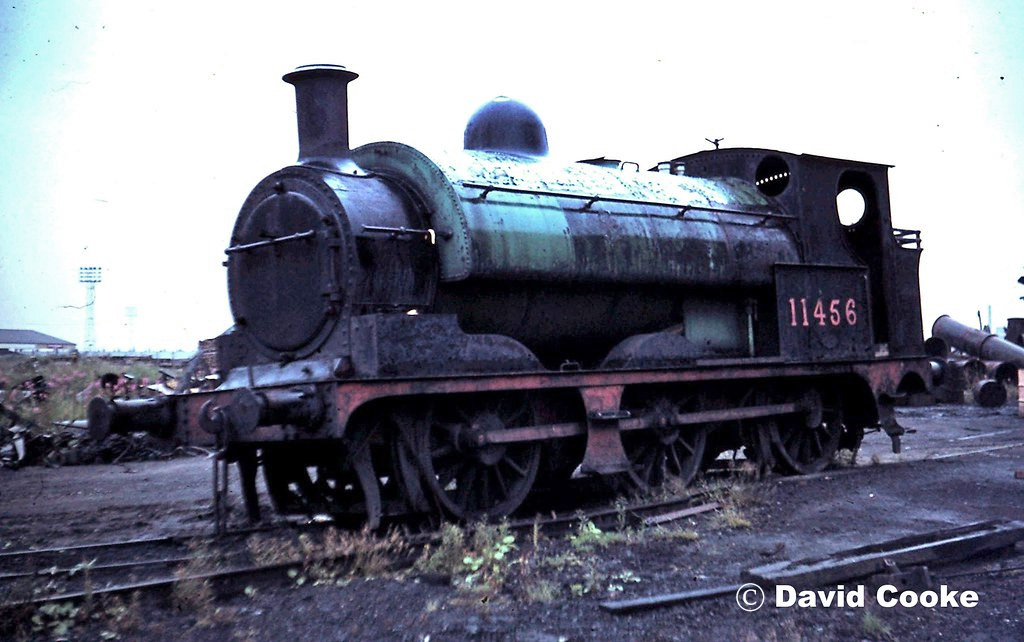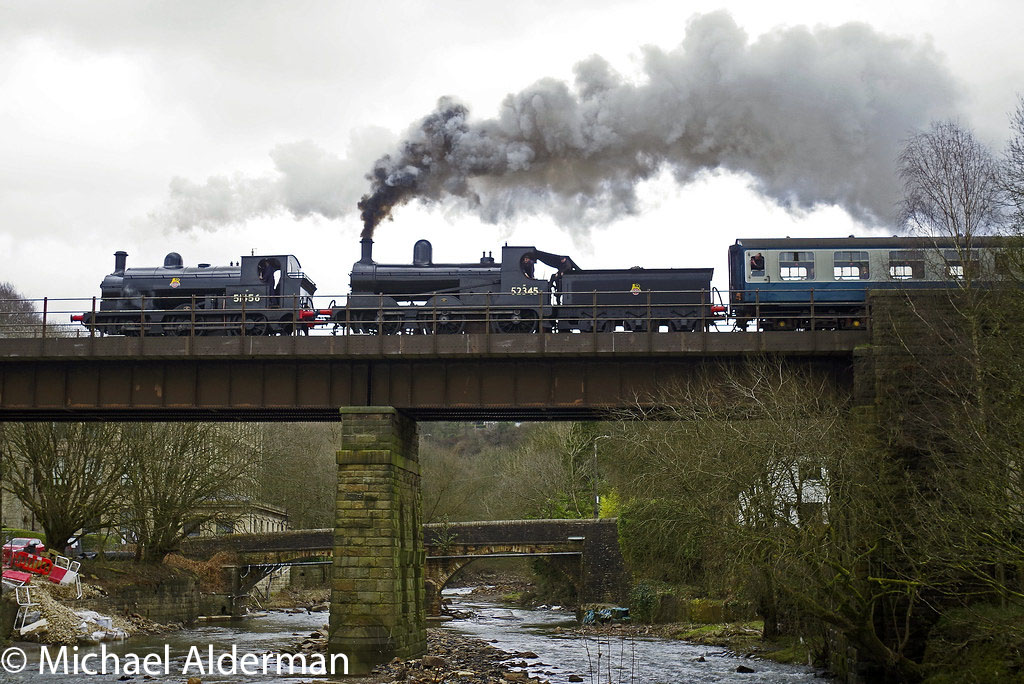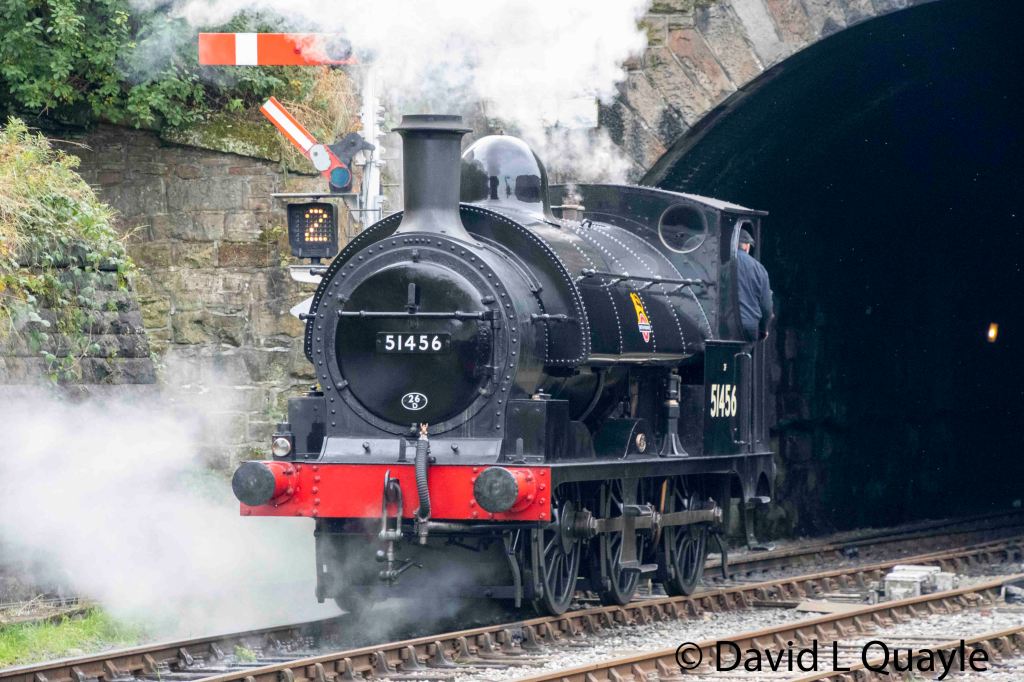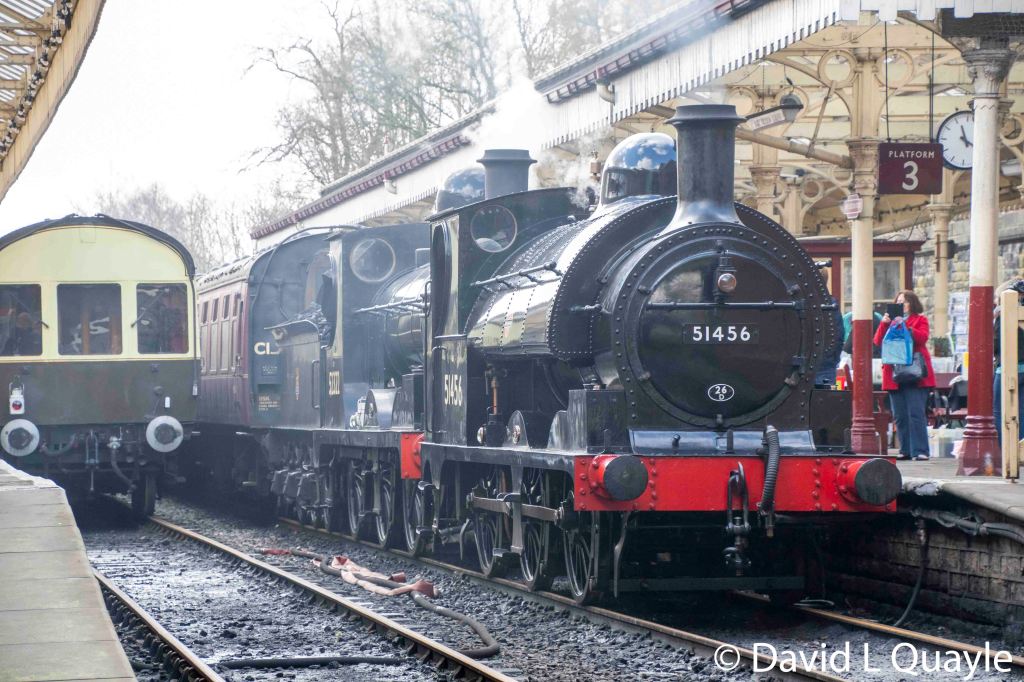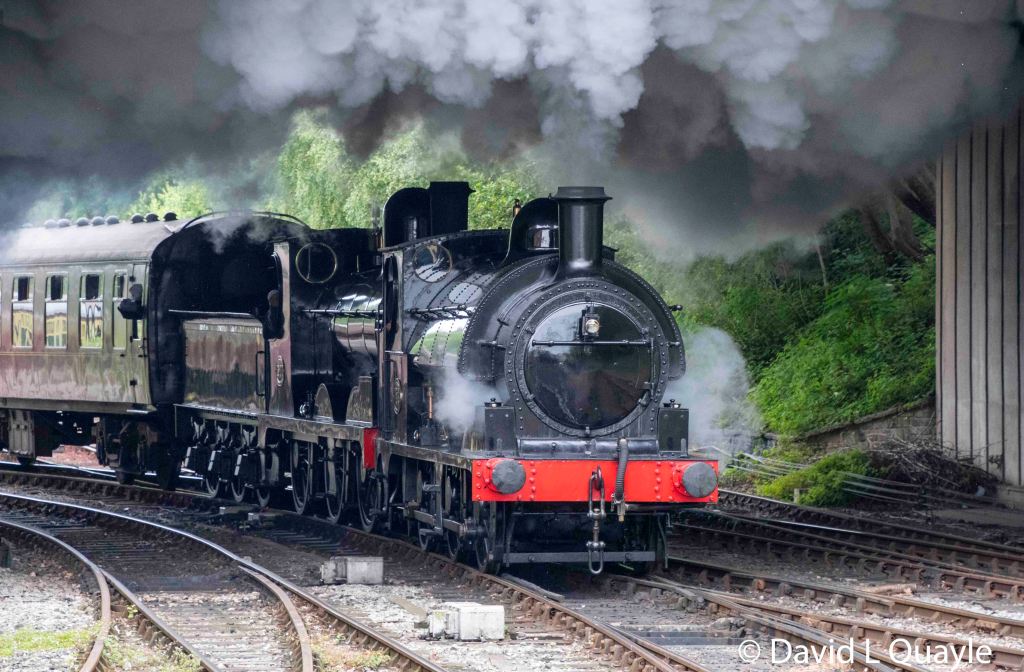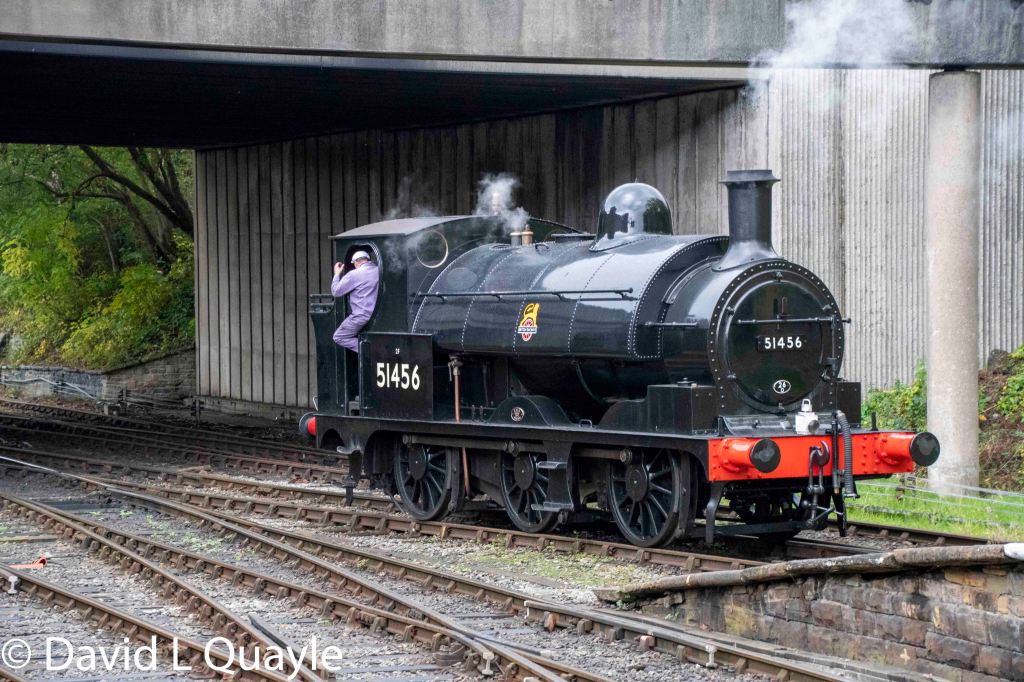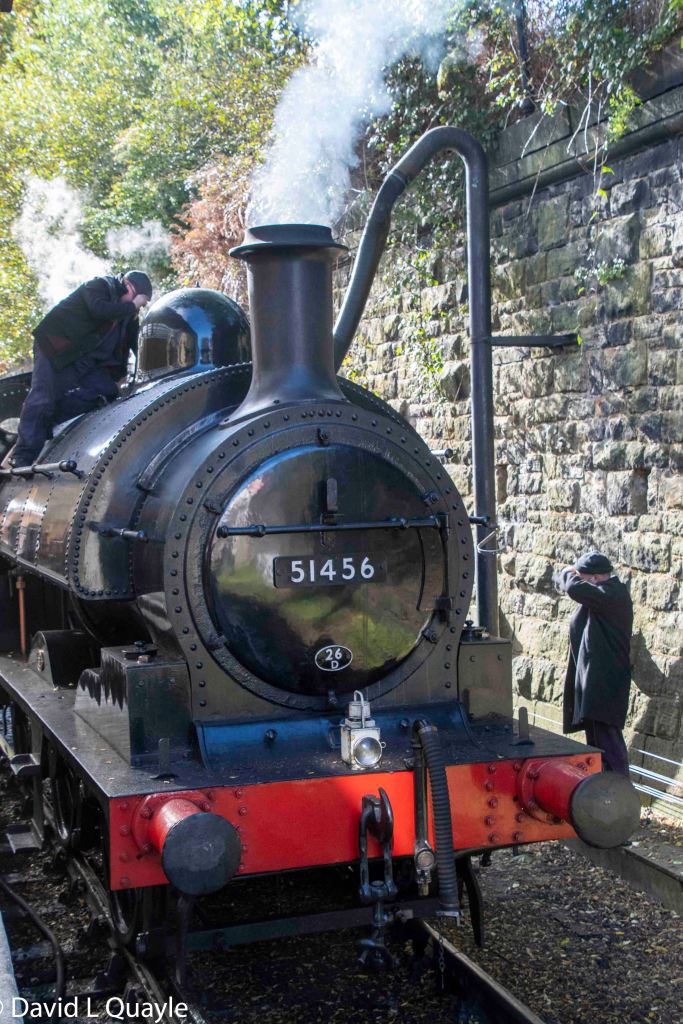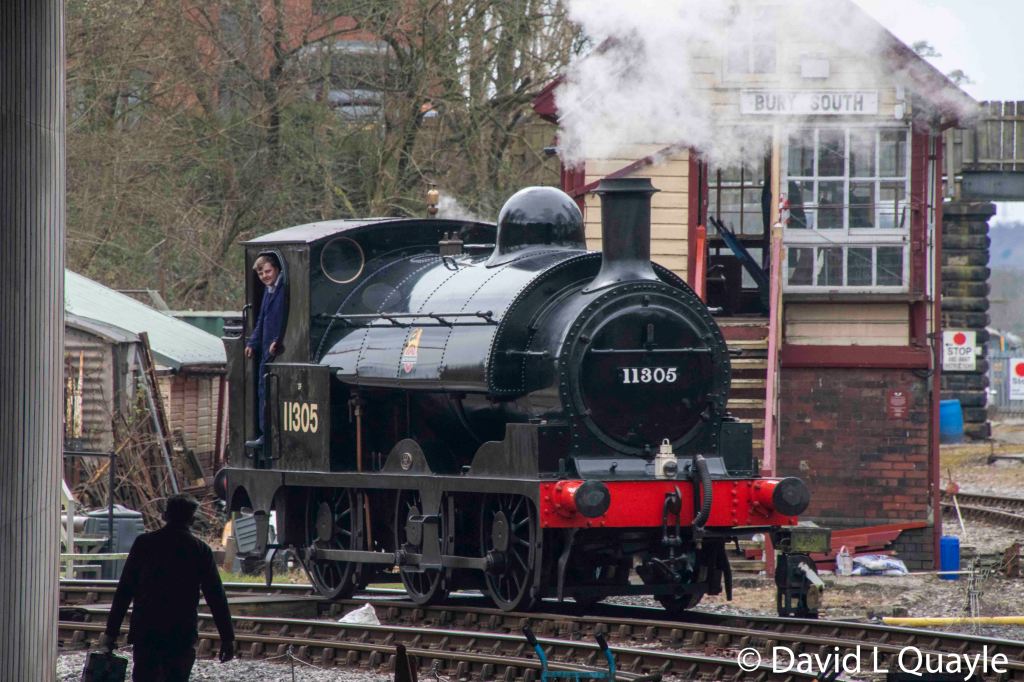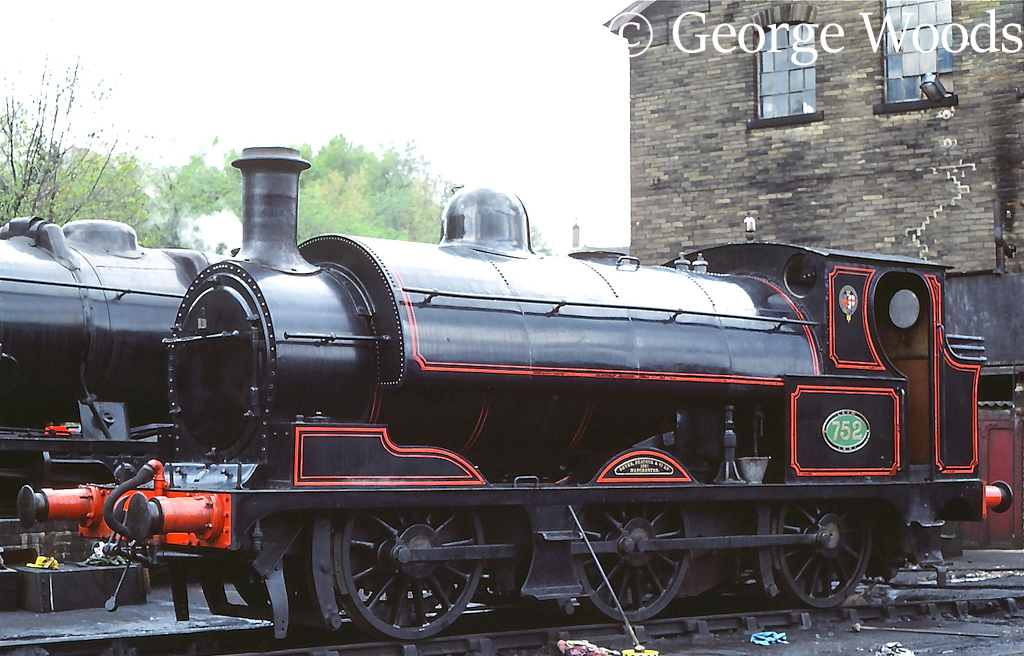
752 was built by Beyer Peacock in 1881 as a 0-6-0 tender engine designed for the Lancashire & Yorkshire Railway by Barton Wright. In 1896 it was rebuilt at Horwich as a 0-6-0 saddle tank to an Aspinall design as there was a need for shunting locomotives.
After Grouping in 1923 the locomotive was re-numbered 11456 by the LMS. In 1937 it was sold to the Blainscough Colliery Co of Coppull in Lancashire.
In 1947 following the formation of the National Coal Board (NCB) the engine came into the possession of the North Western Division of the NCB. In 1967 it was purchased from the NCB for preservation.
Since it had been lying in the open at Parsonage Colliery at Leigh for nine years the locomotive was in poor condition when purchased. Much of restoration work was undertaken at the premises of Yates Duxbury at Heap Bridge in Heywood by members of the L&Y Saddletank Fund (later the L&Y Railway Preservation Society). The locomotives owners subsequently became the L&YR Trust.
In November 1971 the locomotive was moved to Haworth on the Keighley and Worth Valley Railway (KWVR). It first steamed on that railway in May 1972 when it hauled a number of brake van specials for members.
It is of note that the locomotive was unusual in that it still used the old simple vacuum brake as distinct from the automatic vacuum brake invented by Aspinall.
The chimney on 752 was that previously used by 11305 which was used at Horwich Works until it was the last member of the class withdrawn in 1964.
Major work was undertaken on the locomotive during 1979 and 1980 to enable it to participate in full working order in the Grand Locomotive Cavalcade at the Liverpool & Manchester Railway 150th Anniversary at Rainhill in May 1980. By this time the locomotive was almost 100 years old and had spent most of its working life in South West Lancashire. It was taken out of service in 1982 and has been a kit of parts at Haworth for many years.
In July 2016 the frame, cab and saddle tanks were moved to Baron Street shed on the East Lancs Railway at Bury where restoration work is being undertaken by the locomotives owners with assistance from the Bury Standard 4 Group. Work on the boiler was completed earlier.
Agreement has been reached that between the East Lancs Railway and the locomotives owners which will result in 752 running on the East Lancs Railway but also making visits to the KWVR. It is appropriate that 752 will operate on the East Lancs Railway as a number were based there and were employed on shunting duties at Castleton, station pilot duties at nearby Rochdale and workmen’s trains on the Bacup branch.
In December 2016 the boiler underwent a successful steam test at H A McEwen Boiler Repairs at Cowling near Keighley before being transported to the East Lancs Railway.
As part of the overhaul a genuine L&Y whistle has been acquired and a new chimney made to replicate its original chimney. During restoration of the locomotive at the Keighley & Worth Valley Railway in the 1970s a chimney from a former Horwich Works shunter was fitted to replace the NCB chimney it then had.
In March 2017 a crack in the frame was successfully repaired allowing work to continue on rebuilding the locomotive.
Work had progressed on the locomotive to a stage where in early 2019 it was thought that the locomotive may be in steam in 2020. When operational the locomotive is likely to be limited to running a 1,000 miles a year of light passenger duties and photo charters.
In April 2019 the owners said that during restoration original Horwich Works markings were revealed on one of the axles which showed up the brand mark of Horwich steel foundry and a date of April 1895. This date is consistent with the rebuilding of the locomotive at Horwich in 1896 when it was converted to a 0-6-0 saddle tank.
By July 2019 the boiler had been refitted to the frames and a steam test was performed the following month. The steam test had been delayed due to the boiler being fitted with an incorrect regulator rod following the loss of the original rod sometime during the locomotives overhaul. A replacement rod was acquired after taking measurements from 52044.
It is hoped to have the locomotive in service by March 2020 some 25 years after its overhaul commenced.
The locomotive moved under its own steam at Bury in October 2019. The refitting of the saddle tanks, pipework and other detailed jobs was the to follow. Some new manufactured parts like the rear guard irons are required as the originals were lost some time during its long restoration.
By December 2019 it was anticipated that following the fitting of the saddle tank that the locomotive would undergo a formal steam test in January after which it would undergo running in trials.
In January 2020 it was reported that the locomotive underwent its official boiler inspection in December 2019 after which it was coupled to a rake of carriages for a brake test. It was then anticipated that running in would start in January 2020 and its official launch into traffic would take place in the following month.
The locomotive will run as 51456 in BR livery. As it was sold by the LMS in 1937 it never passed into BR stock. It did briefly run as 51456 in 1968 when it was towed by rail from its last workplace at Parsonage Colliery near Leigh to its first preservation base of Yates Duxbury paper mill at Heap Bridge near Bury.
| Home Base | Current Status | Owner |
| East Lancs Railway | Operational | Lancashire & Yorkshire Railway Trust |
